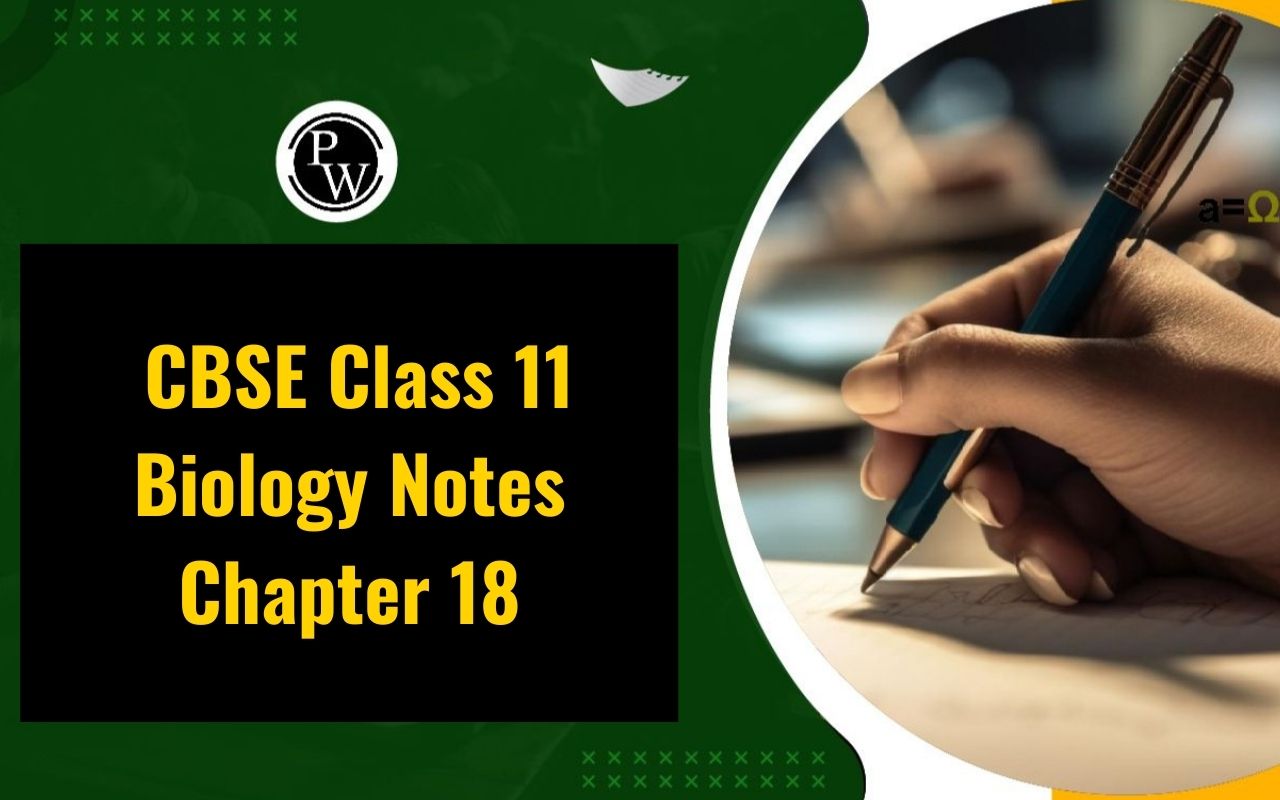
NCERT Solutions For Class 12 Physics Chapter 8 Electromagnetic Waves
NCERT Solutions For Class 12 Physics Chapter 8 Electromagnetic Waves is prepared by our senior and renowned teachers of Physics Wallah primary focus while solving these questions of class-12 in NCERT textbook, also do read theory of this Chapter 8 Electromagnetic Waves while going before solving the NCERT questions. You can download and share NCERT Solutions of Class 12 Physics from Physics Wallah.NCERT Solutions For Class 12 Physics Chapter 8 Overview
NCERT Solutions For Class 12 Physics Chapter 8 important questions has been created by our team of experts to help the students to understand all the topics of this chapter. These questions will help students to understand the chapter better as the explanations are in very simple language which every child can grasp easily.NCERT Solutions For Class 12 Physics Chapter 8 PDF
For NCERT Class 12 Physics, Chapter 8, our team of experts at Physics Wallah has created comprehensive solutions to help students in comprehending and practicing chapter concepts. These questions are meant to help students in understanding explanations. Students are advised to go through these questions before examination to clear their concepts. The NCERT Solutions for Class 12 Physics Chapter 8 Pdf may be downloaded by clicking the following link.NCERT Solutions for Class 12 Physics Chapter 8 PDF Download Link
NCERT Solutions For Class 12 Physics Chapter 8
Answer The Following Question Answer of NCERT Solutions For Class 12 Physics Chapter 8 Electromagnetic Waves:
Question 1. Two circular plates having radius of 12 cm each and separated by 5 cm are used to make a capacitor as shown in the Figure 8.6. An external source charges this capacitor. 0.15 A is the charging current which remains constant. (a) Determine the capacitance and the rate of charge of potential difference between the two capacitiveplates. (b) Calculate the displacement current across the capacitive plates. (c) Kirchhoff’s first rule (junction rule) is applicable to each plate of the capacitor. Yes or No. Give Reasons. Solution :
Radius of each circular plate, r = 12 cm = 0.12 m
Distance between the plates, d = 5 cm = 0.05 m
Charging current, I = 0.15 A
Permittivity of free space,
Solution :
Radius of each circular plate, r = 12 cm = 0.12 m
Distance between the plates, d = 5 cm = 0.05 m
Charging current, I = 0.15 A
Permittivity of free space,
 = 8.85 × 10−12 C2 N−1 m−2
(a) Capacitance between the two plates is given by the relation,
C
= 8.85 × 10−12 C2 N−1 m−2
(a) Capacitance between the two plates is given by the relation,
C
 Where,
A = Area of each plate
Where,
A = Area of each plate

 Charge on each plate, q = CV
Where,
V = Potential difference across the plates
Differentiation on both sides with respect to time (t) gives:
Charge on each plate, q = CV
Where,
V = Potential difference across the plates
Differentiation on both sides with respect to time (t) gives:
 Therefore, the change in potential difference between the plates is 1.87 ×109 V/s.
(b) The displacement current across the plates is the same as the conduction current. Hence, the displacement current, id is 0.15 A.
(c) Yes
Kirchhoff’s first rule is valid at each plate of the capacitor provided that we take the sum of conduction and displacement for current.
Question
2. A parallel plate capacitor (Fig. 8.7) made of circular plates each of radius R = 6.0 cm has a capacitance C = 100 pF. The capacitor is connected to a 230 V ac supply with a (angular) frequency of 300 rad s−1.
(a) What is the rms value of the conduction current?
(b) Is the conduction current equal to the displacement current?
(c) Determine the amplitude of B at a point 3.0 cm from the axis between the plates.
Therefore, the change in potential difference between the plates is 1.87 ×109 V/s.
(b) The displacement current across the plates is the same as the conduction current. Hence, the displacement current, id is 0.15 A.
(c) Yes
Kirchhoff’s first rule is valid at each plate of the capacitor provided that we take the sum of conduction and displacement for current.
Question
2. A parallel plate capacitor (Fig. 8.7) made of circular plates each of radius R = 6.0 cm has a capacitance C = 100 pF. The capacitor is connected to a 230 V ac supply with a (angular) frequency of 300 rad s−1.
(a) What is the rms value of the conduction current?
(b) Is the conduction current equal to the displacement current?
(c) Determine the amplitude of B at a point 3.0 cm from the axis between the plates.
 Solution :
Radius of each circular plate, R = 6.0 cm = 0.06 m
Capacitance of a parallel plate capacitor, C = 100 pF = 100 × 10−12 F
Supply voltage, V = 230 V
Angular frequency, ω = 300 rad s−1
(a) Rms value of conduction current, I
Solution :
Radius of each circular plate, R = 6.0 cm = 0.06 m
Capacitance of a parallel plate capacitor, C = 100 pF = 100 × 10−12 F
Supply voltage, V = 230 V
Angular frequency, ω = 300 rad s−1
(a) Rms value of conduction current, I
 Where,
XC = Capacitive reactance
Where,
XC = Capacitive reactance
 ∴ I = V × ωC
= 230 × 300 × 100 × 10−12
= 6.9 × 10−6 A
= 6.9 μA
Hence, the rms value of conduction current is 6.9 μA.
(b) Yes, conduction current is equal to displacement current.
(c) Magnetic field is given as:
B
∴ I = V × ωC
= 230 × 300 × 100 × 10−12
= 6.9 × 10−6 A
= 6.9 μA
Hence, the rms value of conduction current is 6.9 μA.
(b) Yes, conduction current is equal to displacement current.
(c) Magnetic field is given as:
B
 Where,
μ0 = Free space permeability
Where,
μ0 = Free space permeability
 I0 = Maximum value of current =
I0 = Maximum value of current =
 r = Distance between the plates from the axis = 3.0 cm = 0.03 m
∴B
r = Distance between the plates from the axis = 3.0 cm = 0.03 m
∴B
 = 1.63 × 10−11 T
Hence, the magnetic field at that point is 1.63 × 10−11 T.
Question
3. What physical quantity is the same for X-rays of wavelength 10−10 m, red light of wavelength 6800 Å and radiowaves of wavelength 500 m?
Solution :
The speed of light (3 × 108 m/s) in a vacuum is the same for all wavelengths. It is independent of the wavelength in the vacuum.
Question
4. A plane electromagnetic wave travels in vacuum along z-direction. What can you say about the directions of its electric and magnetic field vectors? If the frequency of the wave is 30 MHz, what is its wavelength?
Solution :
The electromagnetic wave travels in a vacuum along the z-direction. The electric field (E) and the magnetic field (H) are in the x-y plane. They are mutually perpendicular.
Frequency of the wave, ν = 30 MHz = 30 × 106 s−1
Speed of light in a vacuum, c = 3 × 108 m/s
Wavelength of a wave is given as:
= 1.63 × 10−11 T
Hence, the magnetic field at that point is 1.63 × 10−11 T.
Question
3. What physical quantity is the same for X-rays of wavelength 10−10 m, red light of wavelength 6800 Å and radiowaves of wavelength 500 m?
Solution :
The speed of light (3 × 108 m/s) in a vacuum is the same for all wavelengths. It is independent of the wavelength in the vacuum.
Question
4. A plane electromagnetic wave travels in vacuum along z-direction. What can you say about the directions of its electric and magnetic field vectors? If the frequency of the wave is 30 MHz, what is its wavelength?
Solution :
The electromagnetic wave travels in a vacuum along the z-direction. The electric field (E) and the magnetic field (H) are in the x-y plane. They are mutually perpendicular.
Frequency of the wave, ν = 30 MHz = 30 × 106 s−1
Speed of light in a vacuum, c = 3 × 108 m/s
Wavelength of a wave is given as:
 Question
5. A radio can tune in to any station in the 7.5 MHz to 12 MHz band. What is the corresponding wavelength band
?
Solution :
A radio can tune to minimum frequency, ν1 = 7.5 MHz= 7.5 × 106 Hz
Maximum frequency, ν2 = 12 MHz = 12 × 106 Hz
Speed of light, c = 3 × 108 m/s
Corresponding wavelength for ν1 can be calculated as:
Question
5. A radio can tune in to any station in the 7.5 MHz to 12 MHz band. What is the corresponding wavelength band
?
Solution :
A radio can tune to minimum frequency, ν1 = 7.5 MHz= 7.5 × 106 Hz
Maximum frequency, ν2 = 12 MHz = 12 × 106 Hz
Speed of light, c = 3 × 108 m/s
Corresponding wavelength for ν1 can be calculated as:
 Corresponding wavelength for ν2 can be calculated as:
Corresponding wavelength for ν2 can be calculated as:
 Thus, the wavelength band of the radio is 40 m to 25 m.
Question
6. A charged particle oscillates about its mean equilibrium position with a frequency of 109 Hz. What is the frequency of the electromagnetic waves produced by the oscillator?
Solution :
The frequency of an electromagnetic wave produced by the oscillator is the same as that of a charged particle oscillating about its mean position i.e., 109 Hz.
Question
7. The amplitude of the magnetic field part of a harmonic electromagnetic wave in vacuum is B0 = 510 nT. What is the amplitude of the electric field part of the wave?
Solution :
Amplitude of magnetic field of an electromagnetic wave in a vacuum,
B
0
=51
0
nT=510×10
−9
T
Speed of light in vacuum, c = 3×10
8
m/s
Amplitude of electric field of an electromagnetic wave is given by the relation,
E=cB
0
=3×10
8
×51
0
×10
−9
=153N/C
Therefore, the electric field part of the wave is 153 N/C.
Question
8. Suppose that the electric field amplitude of an electromagnetic wave is E0 = 120 N/C and that its frequency is ν = 50.0 MHz. (a) Determine, B0, ω, k, and λ. (b) Find expressions for E and B.
Solution :
Electric field amplitude, E0 = 120 N/C
Frequency of source, ν = 50.0 MHz = 50 × 106 Hz
Speed of light, c = 3 × 108 m/s
(a) Magnitude of magnetic field strength is given as:
Thus, the wavelength band of the radio is 40 m to 25 m.
Question
6. A charged particle oscillates about its mean equilibrium position with a frequency of 109 Hz. What is the frequency of the electromagnetic waves produced by the oscillator?
Solution :
The frequency of an electromagnetic wave produced by the oscillator is the same as that of a charged particle oscillating about its mean position i.e., 109 Hz.
Question
7. The amplitude of the magnetic field part of a harmonic electromagnetic wave in vacuum is B0 = 510 nT. What is the amplitude of the electric field part of the wave?
Solution :
Amplitude of magnetic field of an electromagnetic wave in a vacuum,
B
0
=51
0
nT=510×10
−9
T
Speed of light in vacuum, c = 3×10
8
m/s
Amplitude of electric field of an electromagnetic wave is given by the relation,
E=cB
0
=3×10
8
×51
0
×10
−9
=153N/C
Therefore, the electric field part of the wave is 153 N/C.
Question
8. Suppose that the electric field amplitude of an electromagnetic wave is E0 = 120 N/C and that its frequency is ν = 50.0 MHz. (a) Determine, B0, ω, k, and λ. (b) Find expressions for E and B.
Solution :
Electric field amplitude, E0 = 120 N/C
Frequency of source, ν = 50.0 MHz = 50 × 106 Hz
Speed of light, c = 3 × 108 m/s
(a) Magnitude of magnetic field strength is given as:
 Angular frequency of source is given as:
ω = 2πν
= 2π × 50 × 106
= 3.14 × 108 rad/s
Propagation constant is given as:
Angular frequency of source is given as:
ω = 2πν
= 2π × 50 × 106
= 3.14 × 108 rad/s
Propagation constant is given as:
 Wavelength of wave is given as:
Wavelength of wave is given as:
 (b) Suppose the wave is propagating in the positive x direction. Then, the electric field vector will be in the positive y direction and the magnetic field vector will be in the positive z direction. This is because all three vectors are mutually perpendicular.
Equation of electric field vector is given as:
(b) Suppose the wave is propagating in the positive x direction. Then, the electric field vector will be in the positive y direction and the magnetic field vector will be in the positive z direction. This is because all three vectors are mutually perpendicular.
Equation of electric field vector is given as:
 And, magnetic field vector is given as:
And, magnetic field vector is given as:
 Question
9. The terminology of different parts of the electromagnetic spectrum is given in the text. Use the formula E = hν (for energy of a quantum of radiation: photon) and obtain the photon energy in units of eV for different parts of the electromagnetic spectrum. In what way are the different scales of photon energies that you obtain related to the sources of electromagnetic radiation?
Solution :
Energy of a photon is given as:
Question
9. The terminology of different parts of the electromagnetic spectrum is given in the text. Use the formula E = hν (for energy of a quantum of radiation: photon) and obtain the photon energy in units of eV for different parts of the electromagnetic spectrum. In what way are the different scales of photon energies that you obtain related to the sources of electromagnetic radiation?
Solution :
Energy of a photon is given as:
 Where,
h = Planck’s constant = 6.6 × 10−34 Js
c = Speed of light = 3 × 108 m/s
λ = Wavelength of radiation
Where,
h = Planck’s constant = 6.6 × 10−34 Js
c = Speed of light = 3 × 108 m/s
λ = Wavelength of radiation
 The given table lists the photon energies for different parts of an electromagnetic spectrum for differentλ.
The given table lists the photon energies for different parts of an electromagnetic spectrum for differentλ.
| λ (m) | 103 | 1 | 10−3 | 10−6 | 10−8 | 10−10 | 10−12 |
| E (eV) | 12.375 × 10−10 | 12.375 × 10−7 | 12.375 × 10−4 | 12.375 × 10−1 | 12.375 × 101 | 12.375 × 103 | 12.375 × 105 |
 (b) Magnetic field strength is given as:
(b) Magnetic field strength is given as:
 (c) Energy density of the electric field is given as:
(c) Energy density of the electric field is given as:
 And, energy density of the magnetic field is given as:
And, energy density of the magnetic field is given as:
 Where,
∈0 = Permittivity of free space
μ0 = Permeability of free space
We have the relation connecting E and B as:
E = cB … (1)
Where,
Where,
∈0 = Permittivity of free space
μ0 = Permeability of free space
We have the relation connecting E and B as:
E = cB … (1)
Where,
 … (2)
Putting equation (2) in equation (1), we get
… (2)
Putting equation (2) in equation (1), we get
 Squaring both sides, we get
Squaring both sides, we get
 Question
11. Suppose that the electric field part of an electromagnetic wave in vacuum is E = {(3.1 N/C) cos [(1.8 rad/m) y + (5.4 × 106 rad/s)t]}
Question
11. Suppose that the electric field part of an electromagnetic wave in vacuum is E = {(3.1 N/C) cos [(1.8 rad/m) y + (5.4 × 106 rad/s)t]}
 .
(a) What is the direction of propagation?
(b) What is the wavelength λ?
(c) What is the frequency ν?
(d) What is the amplitude of the magnetic field part of the wave?
(e) Write an expression for the magnetic field part of the wave.
Solution :
(a) From the given electric field vector, it can be inferred that the electric field is directed along the negative x direction. Hence, the direction of motion is along the negative y direction i.e.,
.
(a) What is the direction of propagation?
(b) What is the wavelength λ?
(c) What is the frequency ν?
(d) What is the amplitude of the magnetic field part of the wave?
(e) Write an expression for the magnetic field part of the wave.
Solution :
(a) From the given electric field vector, it can be inferred that the electric field is directed along the negative x direction. Hence, the direction of motion is along the negative y direction i.e.,
 .
(b) It is given that,
.
(b) It is given that,
 The general equation for the electric field vector in the positive x direction can be written as:
The general equation for the electric field vector in the positive x direction can be written as:
 On comparing equations (1) and (2), we get
Electric field amplitude, E0 = 3.1 N/C
Angular frequency, ω = 5.4 × 108 rad/s
Wave number, k = 1.8 rad/m
Wavelength,
On comparing equations (1) and (2), we get
Electric field amplitude, E0 = 3.1 N/C
Angular frequency, ω = 5.4 × 108 rad/s
Wave number, k = 1.8 rad/m
Wavelength,
 = 3.490 m
(c) Frequency of wave is given as:
= 3.490 m
(c) Frequency of wave is given as:
 (d) Magnetic field strength is given as:
(d) Magnetic field strength is given as:
 Where,
c = Speed of light = 3 × 108 m/s
Where,
c = Speed of light = 3 × 108 m/s
 (e) On observing the given vector field, it can be observed that the magnetic field vector is directed along the negative z direction. Hence, the general equation for the magnetic field vector is written as:
(e) On observing the given vector field, it can be observed that the magnetic field vector is directed along the negative z direction. Hence, the general equation for the magnetic field vector is written as:
 Question
12. About 5% of the power of a 100 W light bulb is converted to visible radiation. What is the average intensity of visible radiation
(a) at a distance of 1 m from the bulb?
(b) at a distance of 10 m?
Assume that the radiation is emitted isotropically and neglect reflection.
Solution :
Power rating of bulb, P = 100 W
It is given that about 5% of its power is converted into visible radiation.
Question
12. About 5% of the power of a 100 W light bulb is converted to visible radiation. What is the average intensity of visible radiation
(a) at a distance of 1 m from the bulb?
(b) at a distance of 10 m?
Assume that the radiation is emitted isotropically and neglect reflection.
Solution :
Power rating of bulb, P = 100 W
It is given that about 5% of its power is converted into visible radiation.
 Power of visible radiation,
Power of visible radiation,
 Hence, the power of visible radiation is 5W.
(a) Distance of a point from the bulb, d = 1 m
Hence, intensity of radiation at that point is given as:
Hence, the power of visible radiation is 5W.
(a) Distance of a point from the bulb, d = 1 m
Hence, intensity of radiation at that point is given as:
 (b) Distance of a point from the bulb, d1 = 10 m
Hence, intensity of radiation at that point is given as:
(b) Distance of a point from the bulb, d1 = 10 m
Hence, intensity of radiation at that point is given as:
 Question
13. Use the formula λm T= 0.29 cm K to obtain the characteristic temperature ranges for different parts of the electromagnetic spectrum. What do the numbers that you obtain tell you?
Solution :
A body at a particular temperature produces a continous spectrum of wavelengths. In case of a black body, the wavelength corresponding to maximum intensity of radiation is given according to Planck’s law. It can be given by the relation,
Question
13. Use the formula λm T= 0.29 cm K to obtain the characteristic temperature ranges for different parts of the electromagnetic spectrum. What do the numbers that you obtain tell you?
Solution :
A body at a particular temperature produces a continous spectrum of wavelengths. In case of a black body, the wavelength corresponding to maximum intensity of radiation is given according to Planck’s law. It can be given by the relation,
 Where,
λm = maximum wavelength
T = temperature
Thus, the temperature for different wavelengths can be obtained as:
For λm = 10−4 cm;
Where,
λm = maximum wavelength
T = temperature
Thus, the temperature for different wavelengths can be obtained as:
For λm = 10−4 cm;
 For λm = 5 ×10−5 cm;
For λm = 5 ×10−5 cm;
 For λm = 10−6 cm;
For λm = 10−6 cm;
 and so on.
The numbers obtained tell us that temperature ranges are required for obtaining radiations in different parts of an electromagnetic spectrum. As the wavelength decreases, the corresponding temperature increases.
Question
14. Given below are some famous numbers associated with electromagnetic radiations in different contexts in physics. State the part of the electromagnetic spectrum to which each belongs.
(a) 21 cm (wavelength emitted by atomic hydrogen in interstellar space).
(b) 1057 MHz (frequency of radiation arising from two close energy levels in hydrogen; known as Lamb shift).
(c) 2.7 K [temperature associated with the isotropic radiation filling all space-thought to be a relic of the ‘big-bang’ origin of the universe].
(d) 5890 Å - 5896 Å [double lines of sodium]
(e) 14.4 keV [energy of a particular transition in 57Fe nucleus associated with a famous high resolution spectroscopic method
Solution :
(a) Radio waves; it belongs to the short wavelength end of the electromagnetic spectrum.
(b) Radio waves; it belongs to the short wavelength end.
(c) Temperature, T = 2.7 °K
λm is given by Planck’s law as:
and so on.
The numbers obtained tell us that temperature ranges are required for obtaining radiations in different parts of an electromagnetic spectrum. As the wavelength decreases, the corresponding temperature increases.
Question
14. Given below are some famous numbers associated with electromagnetic radiations in different contexts in physics. State the part of the electromagnetic spectrum to which each belongs.
(a) 21 cm (wavelength emitted by atomic hydrogen in interstellar space).
(b) 1057 MHz (frequency of radiation arising from two close energy levels in hydrogen; known as Lamb shift).
(c) 2.7 K [temperature associated with the isotropic radiation filling all space-thought to be a relic of the ‘big-bang’ origin of the universe].
(d) 5890 Å - 5896 Å [double lines of sodium]
(e) 14.4 keV [energy of a particular transition in 57Fe nucleus associated with a famous high resolution spectroscopic method
Solution :
(a) Radio waves; it belongs to the short wavelength end of the electromagnetic spectrum.
(b) Radio waves; it belongs to the short wavelength end.
(c) Temperature, T = 2.7 °K
λm is given by Planck’s law as:
 This wavelength corresponds to microwaves.
(d) This is the yellow light of the visible spectrum.
(e) Transition energy is given by the relation,
E = hν
Where,
h = Planck’s constant = 6.6 × 10−34 Js
ν = Frequency of radiation
Energy, E = 14.4 K eV
This wavelength corresponds to microwaves.
(d) This is the yellow light of the visible spectrum.
(e) Transition energy is given by the relation,
E = hν
Where,
h = Planck’s constant = 6.6 × 10−34 Js
ν = Frequency of radiation
Energy, E = 14.4 K eV
 This corresponds to X-rays.
Question
15. Answer the following questions:
(a) Long distance radio broadcasts use short-wave bands. Why?
(b) It is necessary to use satellites for long distance TV transmission. Why?
(c) Optical and radio telescopes are built on the ground but X-ray astronomy is possible only from satellites orbiting the earth. Why?
(d) The small ozone layer on top of the stratosphere is crucial for human survival. Why?
(e) If the earth did not have an atmosphere, would its average surface temperature be higher or lower than what it is now?
(f) Some scientists have predicted that a global nuclear war on the earth would be followed by a severe ‘nuclear winter’ with a devastating effect on life on earth. What might be the basis of this prediction?
Solution :
(a) Long distance radio broadcasts use shortwave bands because only these bands can be refracted by the ionosphere.
(b) It is necessary to use satellites for long distance TV transmissions because television signals are of high frequencies and high energies. Thus, these signals are not reflected by the ionosphere. Hence, satellites are helpful in reflecting TV signals. Also, they help in long distance TV transmissions.
(c) With reference to X-ray astronomy, X-rays are absorbed by the atmosphere. However, visible and radio waves can penetrate it. Hence, optical and radio telescopes are built on the ground, while X-ray astronomy is possible only with the help of satellites orbiting the Earth.
(d) The small ozone layer on the top of the atmosphere is crucial for human survival because it absorbs harmful ultraviolet radiations present in sunlight and prevents it from reaching the Earth’s surface.
(e) In theabsenceof an atmosphere, there would be no greenhouse effect on the surface of the Earth. As a result, the temperature of the Earth would decrease rapidly, making it chilly and difficult for human survival.
(f) A global nuclear war on the surface of the Earth would have disastrous consequences. Post-nuclear war, the Earth will experience severe winter as the war will produce clouds of smoke that would cover maximum parts of the sky, thereby preventing solar light form reaching the atmosphere. Also, it will lead to the depletion of the ozone layer.
This corresponds to X-rays.
Question
15. Answer the following questions:
(a) Long distance radio broadcasts use short-wave bands. Why?
(b) It is necessary to use satellites for long distance TV transmission. Why?
(c) Optical and radio telescopes are built on the ground but X-ray astronomy is possible only from satellites orbiting the earth. Why?
(d) The small ozone layer on top of the stratosphere is crucial for human survival. Why?
(e) If the earth did not have an atmosphere, would its average surface temperature be higher or lower than what it is now?
(f) Some scientists have predicted that a global nuclear war on the earth would be followed by a severe ‘nuclear winter’ with a devastating effect on life on earth. What might be the basis of this prediction?
Solution :
(a) Long distance radio broadcasts use shortwave bands because only these bands can be refracted by the ionosphere.
(b) It is necessary to use satellites for long distance TV transmissions because television signals are of high frequencies and high energies. Thus, these signals are not reflected by the ionosphere. Hence, satellites are helpful in reflecting TV signals. Also, they help in long distance TV transmissions.
(c) With reference to X-ray astronomy, X-rays are absorbed by the atmosphere. However, visible and radio waves can penetrate it. Hence, optical and radio telescopes are built on the ground, while X-ray astronomy is possible only with the help of satellites orbiting the Earth.
(d) The small ozone layer on the top of the atmosphere is crucial for human survival because it absorbs harmful ultraviolet radiations present in sunlight and prevents it from reaching the Earth’s surface.
(e) In theabsenceof an atmosphere, there would be no greenhouse effect on the surface of the Earth. As a result, the temperature of the Earth would decrease rapidly, making it chilly and difficult for human survival.
(f) A global nuclear war on the surface of the Earth would have disastrous consequences. Post-nuclear war, the Earth will experience severe winter as the war will produce clouds of smoke that would cover maximum parts of the sky, thereby preventing solar light form reaching the atmosphere. Also, it will lead to the depletion of the ozone layer.
NCERT Solutions For Class 12 Physics Chapter 8 FAQs
What is the main source of electromagnetic wave?
a time-space varying electric field produces a varying magnetic field at right angles to it and the time-space varying magnetic field in turn produces an electric field at right angles to it and this continues forming oscillations of electric and magnetic field components which constitute an electromagnetic.
Why it is called electromagnetic waves?
Electromagnetic waves are formed when an electric field comes in contact with a magnetic field. They are hence known as 'electromagnetic' waves. The electric field and magnetic field of an electromagnetic wave are perpendicular (at right angles) to each other.
What are the uses of EM waves?
Electromagnetic waves have a vast range of practical everyday applications that includes such diverse uses as communication by cell phone and radio broadcasting, WiFi, cooking, vision, medical imaging, and treating cancer.
What is the formula for the electromagnetic wave?
Electromagnetic waves are transverse waves. The wave number is k = 2π/λ, where λ is the wavelength of the wave. The frequency f of the wave is f = ω/2π, ω is the angular frequency.
Why is light an electromagnetic wave?
Light is produced by acceleration of charged particles (photons), therefore, by law of electromagnetism light is an electromagnetic wave.
🔥 Trending Blogs
Talk to a counsellorHave doubts? Our support team will be happy to assist you!

Check out these Related Articles
Free Learning Resources
PW Books
Notes (Class 10-12)
PW Study Materials
Notes (Class 6-9)
Ncert Solutions
Govt Exams
Class 6th to 12th Online Courses
Govt Job Exams Courses
UPSC Coaching
Defence Exam Coaching
Gate Exam Coaching
Other Exams
Know about Physics Wallah
Physics Wallah is an Indian edtech platform that provides accessible & comprehensive learning experiences to students from Class 6th to postgraduate level. We also provide extensive NCERT solutions, sample paper, NEET, JEE Mains, BITSAT previous year papers & more such resources to students. Physics Wallah also caters to over 3.5 million registered students and over 78 lakh+ Youtube subscribers with 4.8 rating on its app.
We Stand Out because
We provide students with intensive courses with India’s qualified & experienced faculties & mentors. PW strives to make the learning experience comprehensive and accessible for students of all sections of society. We believe in empowering every single student who couldn't dream of a good career in engineering and medical field earlier.
Our Key Focus Areas
Physics Wallah's main focus is to make the learning experience as economical as possible for all students. With our affordable courses like Lakshya, Udaan and Arjuna and many others, we have been able to provide a platform for lakhs of aspirants. From providing Chemistry, Maths, Physics formula to giving e-books of eminent authors like RD Sharma, RS Aggarwal and Lakhmir Singh, PW focuses on every single student's need for preparation.
What Makes Us Different
Physics Wallah strives to develop a comprehensive pedagogical structure for students, where they get a state-of-the-art learning experience with study material and resources. Apart from catering students preparing for JEE Mains and NEET, PW also provides study material for each state board like Uttar Pradesh, Bihar, and others
Copyright © 2025 Physicswallah Limited All rights reserved.
Get App









